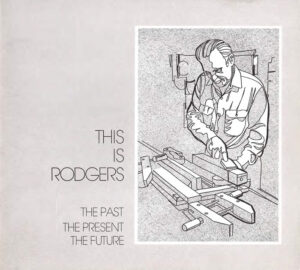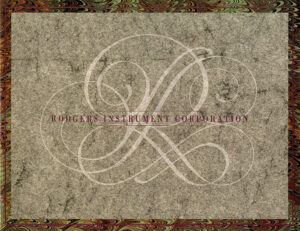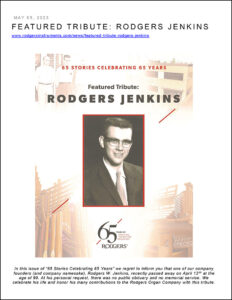The Rodgers Organ Company was formed on April 30, 1958 by three former Tektronix employees - Rodgers Jenkins, Fred Tinker, and Bill Johnson. This May 1958 TekTalk article describes the formation of the company. Of interest is that Tektronix authorized an evaluation of the development and manufacturing of an electronic organ as an means to diversify Tektronix. The study recommended that a separate company be formed.

This September 28, 1959 ScopeScoop describes the construction of building 74 of which 1/3 will be leased to Rodgers Organ.
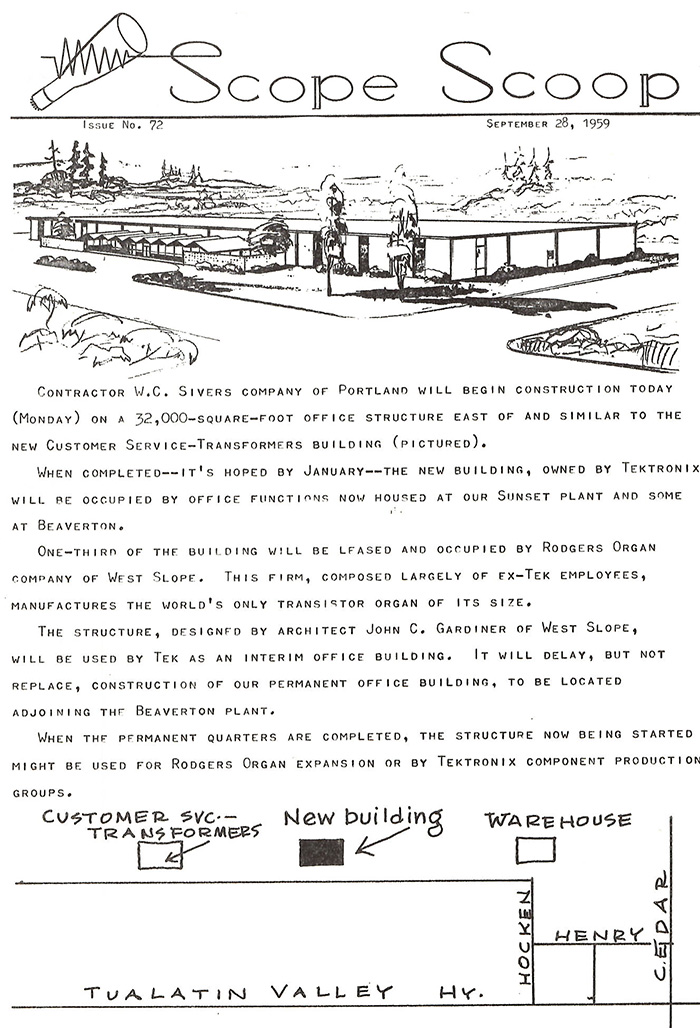
This September 28, 1959 TekTalk article features Rodgers Organ.
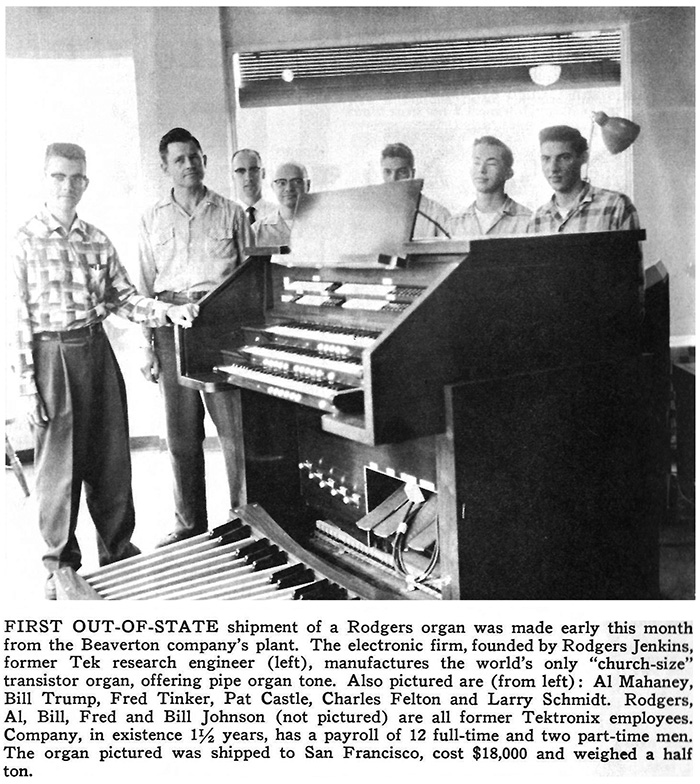
This photo shows Rodgers Jenkins with a 545 oscilloscope.
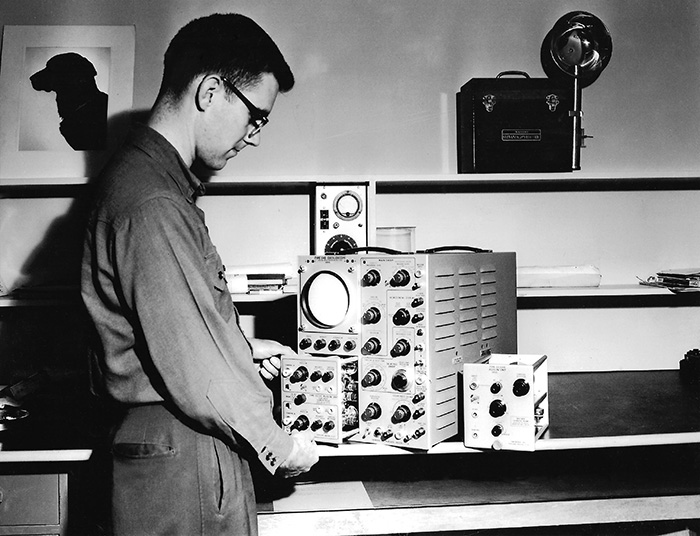
The founders came up with a product that quickly gained acceptance in the church music world. From a technical standpoint, it was the first electronic organ to be fully transistorized except the power amplifiers (which also soon became solid state). This early power amplifier shows the extent of Tektronix influence on the construction and components. The power supply and amplifier were constructed on separate chassis and the power supply could support up to three amplifiers. Power is daisy chained by the octal socket on the lower left corner of the power amplifier.
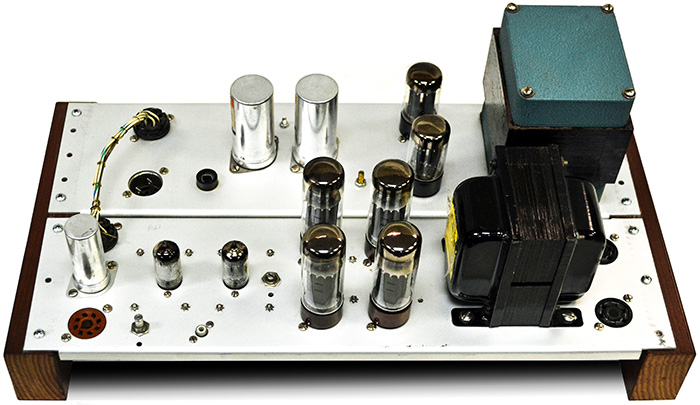
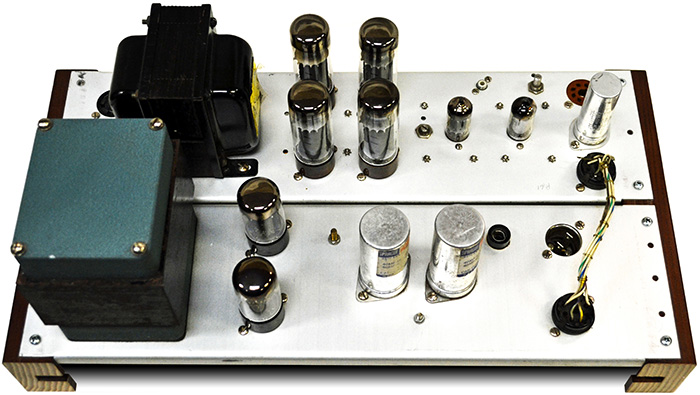
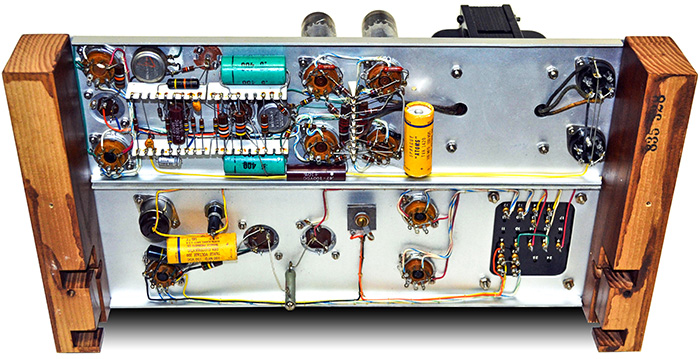
Musically, renowned organists were consulted and listened to, and success soon led to the need for a large new manufacturing facility. Land was purchased near the Hillsboro airport around 1960 and a building erected. The quality of the product attracted the support of a large number of good organists, and the company grew rapidly. Cabinetry was always a big contributor to this quality, with a large portion of the factory devoted to furniture grade woodworking and finishing.
This photo shows Rodgers Jenkins and Fred Tinker with a Rodgers organ.
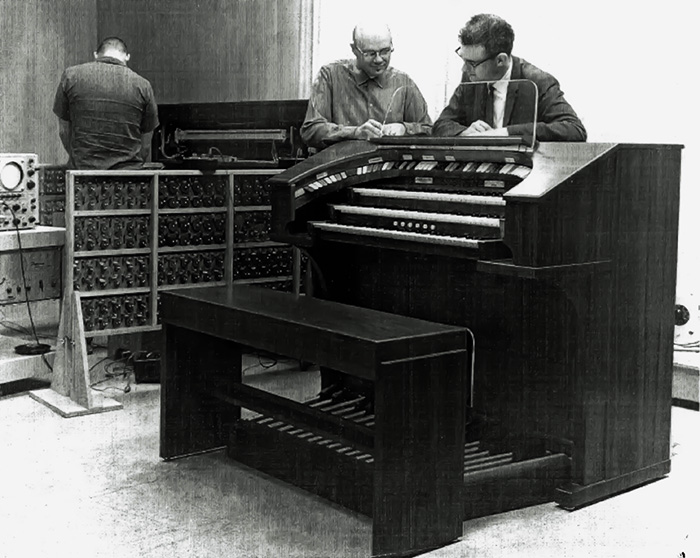
This photo of a 502A Dual Beam oscilloscope is from the 1964-1965 Tektronix Catalog.
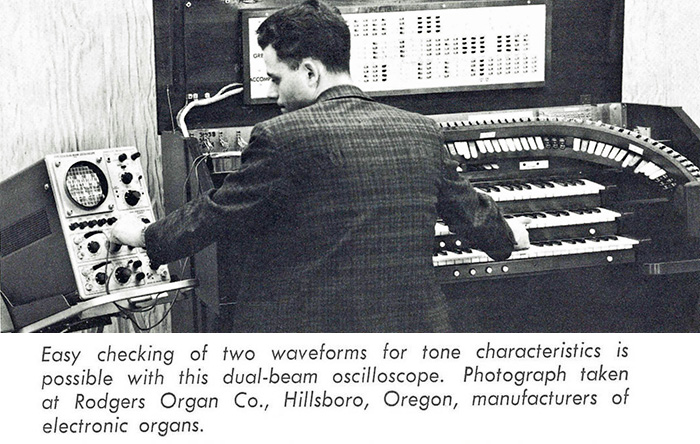
In the early 1970's, an affiliation was established with the Ruffatti Pipe Organ Co. in Italy to provide the addition of real pipes to the basic electronic instrument, and several "standard" models were created. Rodgers was the first to do this marriage of pipes and electronics successfully. (Conn had tried previously, but lacked a method to keep the electronics in tune with the pipes, and thus wasn't a success.) The idea grew, and by the end of the decade, Rodgers was doing its own thing and building wood components in house while purchasing pipes from outside vendors. This culminated in the mid 1980's with a number of large and almost-all pipe instruments in custom church installations. By the end of the decade, this area of the business was phased out with new ownership, but from then on all instruments had the capability of supporting pipe additions in either standard or custom packages.
Rodgers underwent a couple of ownership changes in the early to mid 1980's, followed at the end of the decade with a purchase by Roland Japan. (Their founder Ikutaro Kakehashi had a personal interest in organs, much like Howard Vollum.) Rodgers engineers had been in the middle of an extensive R&D effort to convert to a digital tone generator system (control systems were already microprocessor based), but since Roland already had such technology in place, it was soon adapted to the organs and was a good fit. A sample based system, it grew more and more powerful as memory became cheaper and samples could gain in quantity and size.
The relationship with Roland lasted roughly 25 years. Unfortunately, changing tastes in church music and lower sales meant Rodgers wasn't contributing the level of profitability that Roland wanted and they sold the company a few years ago to a former competitor, Johannus of the Netherlands. They retained the name and a couple dozen employees, which were moved to a facility in North Plains, OR. Handled from there are concept design, sales, service and assembly of the imported parts, and shipping.
We have an audio interview with Rodger's employee Tony Schmidt on our Audio Gallery.
Here is a photo of several Rodgers employees which includes our volunteer Tom Goodapple.
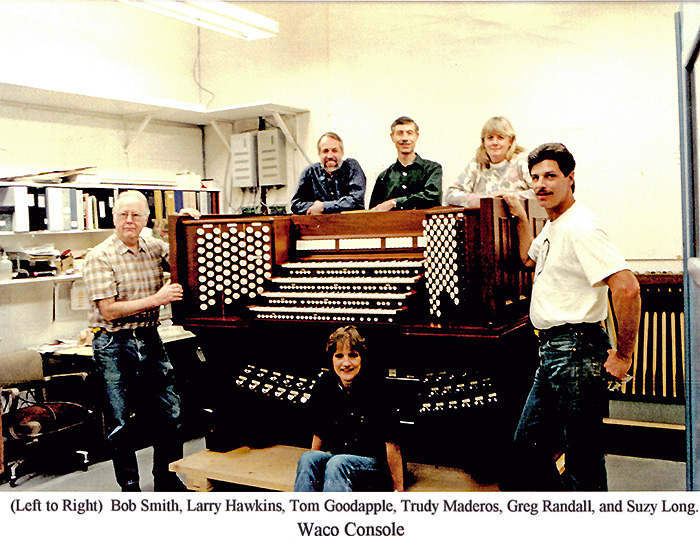
One of Tom's responsibilities was recording different organs for sound samples. Here is another photo of him setting up for a recording.
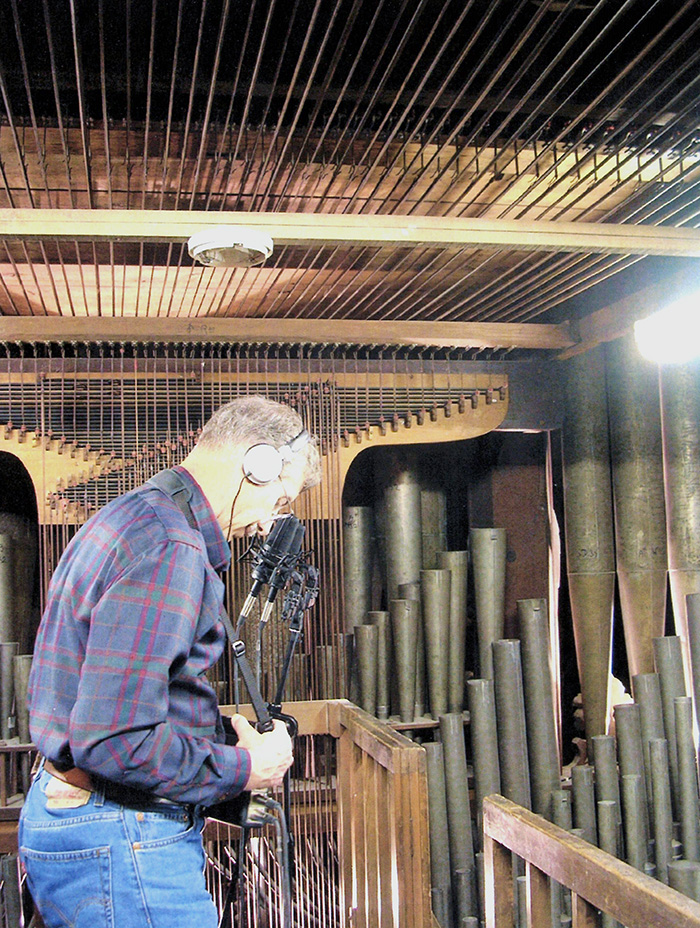
We believe this undated brochure providing a short history and an overview of the company is from 1977. Click on the the image to view the PDF.
This is a 1991 brochure for Rodgers Instrument Corporation. Click on the image to view the PDF.
Rodgers W. Jenkins, passed away on April 12, 2023 at the age of 99. There is a personal tribute to Rodger on the Rodgers Instrument website. [External site]
The tribute is also available here. Click on the image to view the PDF.
Howard Vollum was known for his love of good music and had a studio built at his home for his pipe organ. Howard's organ was built around the former San Francisco Granada (Paramount) 4/33 style 285 Wurlitzer. After Howard's death the organ was sold to the Regent Theater in Melbourne, Australia.
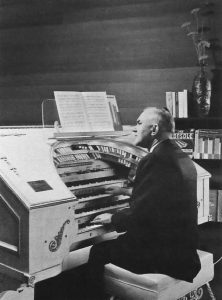
The document "A Gift Of Music" is a 16 page article that describes the construction of Howard's studio and the acquisition and assembly of his pipe organ. Click on the image to view the PDF.
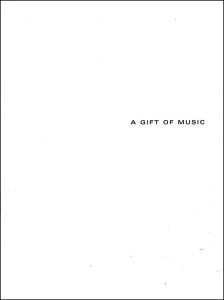
Additional photos of the organ can be seen at the Puget Sound Theater Organ Society website.
The museum has a recording from Howard's pipe organ. This selection is one from the recording. Jonas Nordwall of Rodgers Organ is the organist and Howard Vollum and Dennis Hedberg of Rodgers Organ made the recording.

